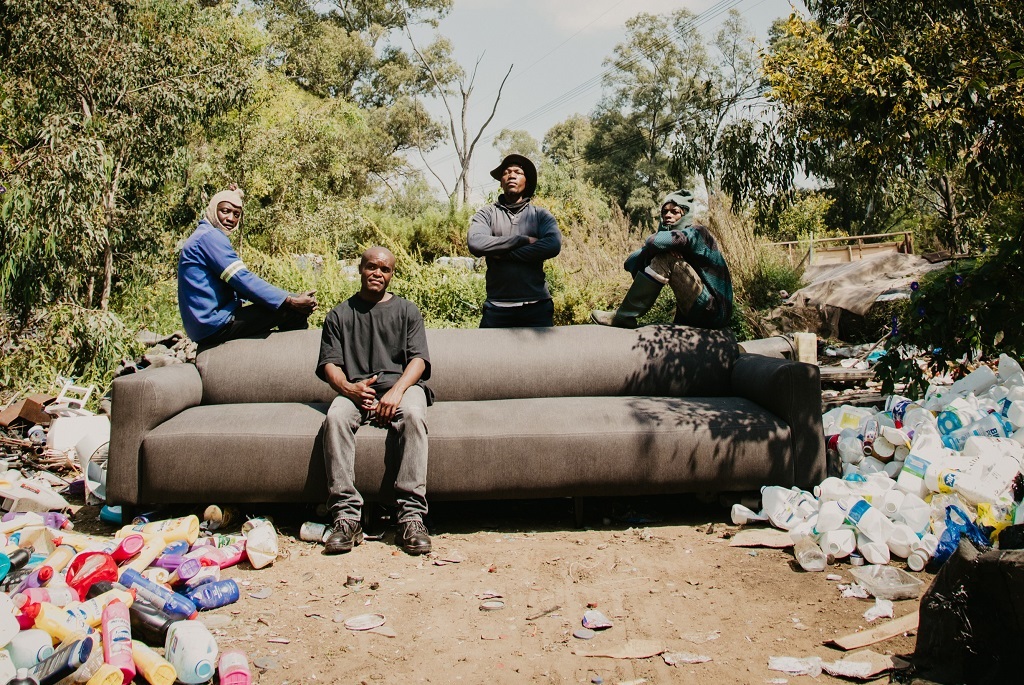
You can design, decorate and beautify your living space in a more sustainable way that reduces your carbon footprint, writes interior designer Vinette Diab-Nicholls.
- For climate change news and analysis, go to News24 Climate Future.
Designing, decorating, and beautifying our living spaces with sustainability in mind not only helps reduce our carbon footprint and environmental impact, but it also creates a healthier and more vibrant living environment for ourselves and future generations.
The global impact of unsustainable living and business practices cannot be ignored. Climate change is a real and pressing threat that affects every corner of our planet.
According to the Intergovernmental Panel on Climate Change (IPCC), human activities, including the burning of fossil fuels, deforestation, and industrial processes, are the primary drivers of climate change.
The consequences of climate change include rising sea levels, extreme weather events, loss of biodiversity, and displacement of communities, among many others. Urgent action is needed to mitigate and adapt to the effects of climate change, and sustainable living is one of the key solutions.
Follow these nine steps and do your bit – however small – to save our precious earth:
1. Choose materials wisely
One of the first steps towards sustainable home and office design is to choose eco-friendly materials.
Many traditional building and decorating materials, such as paints, flooring, and furniture, contain harmful chemicals and pollutants that can be detrimental to both human health and the environment. Opting for sustainable materials, such as reclaimed wood, bamboo, cork, and low VOC (Volatile Organic Compounds) paints, can significantly reduce the environmental impact of your home or office.
These materials are often made from renewable resources, are durable, and emit fewer harmful chemicals, making them a greener choice for your living spaces.
2. Be energy efficient
The latest Global Status Report for Buildings and Construction, shows that the sector accounted for 37% of energy and process-related global carbon emissions in 2021. That's a staggering statistic that highlights the urgent need for sustainable building practices.
By incorporating energy-efficient features into your home or office design, such as solar panels, insulation, and LED lighting, you can significantly reduce your carbon footprint and decrease your environmental impact.
Not only will this help combat climate change, but it will also result in long-term cost savings on energy bills.
3. Become water-wise
Another crucial aspect of sustainable home and office design is water conservation. Freshwater is a precious resource, and as water scarcity becomes an increasingly prevalent issue in many parts of the world, it's vital to use water wisely.
Installing low-flow faucets, showerheads, and dual-flush toilets can significantly reduce water consumption in your home or office. Additionally, incorporating water-efficient landscaping techniques, such as using native plants, rainwater harvesting, and drip irrigation, can help conserve water and create a beautiful and sustainable outdoor space.
READ | Water rationed in Catalonia as drought bites deeper
4. Upcycle
Upcycling, which involves repurposing old or discarded items into new and functional pieces, is gaining popularity as a sustainable interior design trend.
For example, an old wooden pallet can be transformed into a unique coffee table, or vintage doors can be repurposed into a headboard for your bed. Upcycling not only reduces waste and promotes resourcefulness, but it also adds a personal touch to your home or office decor.
5. Join the thrifting craze!
In addition to upcycling, opting for secondhand or vintage furniture and decor items is another eco-friendly way to decorate your home or office.
Thrift stores, antique markets, and online marketplaces offer a wide range of unique and affordable furniture and decor pieces that can add character and style to your living spaces without contributing to the demand for new products.
By giving pre-owned items a new lease on life, you are not only reducing waste but also supporting the circular economy and promoting sustainable consumption practices.
6. Use nature
Indoor plants not only add a touch of greenery and freshness to your living spaces but also provide numerous health and environmental benefits.
Plants naturally filter the air, absorbing pollutants and releasing oxygen, which can improve indoor air quality and promote overall well-being. Additionally, indoor plants can reduce stress, boost productivity, and enhance creativity, making them a valuable addition to any home or office environment.
7. The Three Rs
Reducing waste by practicing the 3Rs: Reduce, Reuse, and Recycle. Minimising single-use items, recycling properly, and repurposing items whenever possible can help reduce the amount of waste that ends up in landfills.
8. Conserve energy
Be mindful of your energy usage, such as turning off lights and electronics when not in use, using natural light during the day, and using energy-efficient appliances. Additionally, reducing water waste by fixing leaks promptly, collecting rainwater for plants, and using a dishwasher and washing machine with full loads can all contribute to a more sustainable lifestyle.
9. Support green business
It's important to remember that sustainable living is not just about individual actions, but also about advocating for systemic change.
Supporting businesses and organisations that prioritise sustainability and environmental responsibility is crucial in driving positive change. By choosing eco-friendly products and supporting companies with sustainable practices, you are sending a message that sustainability matters to consumers, and encouraging more businesses to adopt environmentally-friendly practices.
As we face these pressing environmental challenges, it's clear that sustainable living is not just an option but a necessity for the health and well-being of our planet and future generations. Incorporating sustainable design, decorating, and beautifying practices in our homes and offices can make a significant positive impact on the environment and help build a more sustainable future.
Vinette Diab-Nicholls is the founder and CEO of South African interior design studio DIYgirls, which prioritises sustainability, and has a zero-waste policy. News24 encourages freedom of speech and the expression of diverse views. The views of columnists published on News24 are therefore their own and do not necessarily represent the views of News24.




 Publications
Publications
 Partners
Partners












